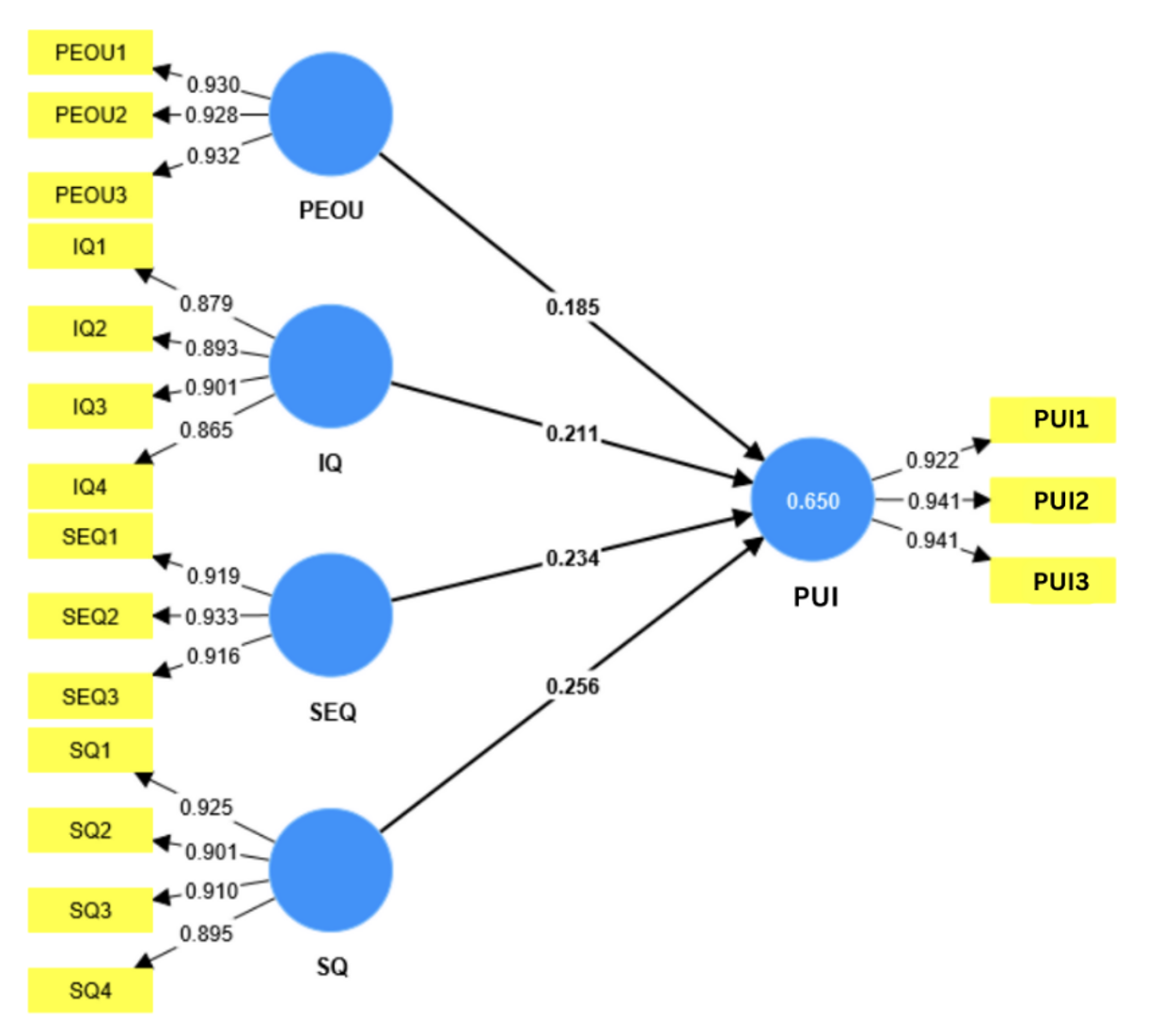ปัจจัยที่มีผลต่อการยอมรับเทคโนโลยีไลฟ์สตรีมมิงเพื่อซื้อสินค้าของนักศึกษามหาวิทยาลัยราชภัฏอุบลราชธานี: กรณีศึกษาแอปพลิเคชัน TikTok
Main Article Content
บทคัดย่อ
ปัจจุบันนี้เทคโนโลยีไลฟ์สตรีมมิงได้รับความนิยมมากขึ้นทั่วโลก เนื่องจากเป็นเทคโนโลยีที่ช่วยให้ผู้รับชมสามารถโต้ตอบแบบเวลาจริง และใกล้ชิดกับผู้มีอิทธิผลในการซื้อสินค้ามากยิ่งขึ้น ในกรณีของประเทศไทยเองก็เช่นกัน แพลตฟอร์มที่ได้รับความนิยมสูงในการใช้งานไลฟ์สตรีมมิงก็คือ TikTok ซึ่งเป็นแอปพลิเคชันที่ทำงานบนอุปกรณ์พกพา เป้าหมายหลักคือเป็นสื่อสังคมออนไลน์สำหรับแบ่งปันวีดีโอสั้น โดยมีฟีเจอร์ไลฟ์สตรีมที่ชื่อว่า TikTok LIVE ซึ่ง ฟีเจอร์นี้ได้รับความนิยมและเติบโตขึ้นต่อเนื่อง โดยเฉพาะในกลุ่ม Generation Z ที่สำคัญช่องจากการไลฟ์สตรีมมิงนี้ยังได้เปลี่ยนตัวเองเป็นช่องทางสำหรับการจำหน่ายสินค้าและบริการอีกด้วย ดั้งนั้น งานวิจัยนี้จึงต้องการหาปัจจัยที่มีผลกระทบต่อการตัดสินใจซื้อสินค้าทางไลฟ์สตรีมมิงบน TikTok LIVE โดยมีกลุ่มตัวอย่างคือ Generation Z ที่อาศัยอยู่ในจังหวัดอุบลราชธานี โดยมีประชากรคือนักศึกษามหาวิทยาลัยราชภัฏอุบลราชธานี การศึกษานี้มีกลุ่มตัวอย่างทั้งหมดจำนวน 239 คน เครื่องมือที่ใช้ในการเก็บข้อมูลคือแบบสอบถามออนไลน์และมีการตรวจสอบความเที่ยงตรงของเนื้อหาจากผู้ทรงคุณวุฒิ 3 คน การวิเคราะห์ข้อมูลใช้การวิเคราะห์สมการโมเดลเชิงโครงสร้างแบบกำลังสองน้อยสุดบางส่วนหรือ PLS-SEM เพื่อทำการหาความสัมพันธ์ระหว่างตัวแปร ผลการศึกษาพบว่า คุณภาพบริการ คุณภาพของระบบ ความง่ายในการใช้งาน และคุณภาพข้อมูลส่งผลต่อความตั้งใจซื้อสินค้าของนักศึกษามหาวิทยาลัยราชภัฏอุบลราชธานีผ่านแอปพลิเคชัน TikTok อย่างมีนัยสำคัญ
Article Details

This work is licensed under a Creative Commons Attribution-NonCommercial-NoDerivatives 4.0 International License.
ผู้แต่งจะต้องกรอกข้อมูลเพื่อโอนลิขสิทธิ์ (copyright) ให้กับวารสารวิทยาการสารสนเทศและเทคโนโลยีประยุกต์ ก่อนเผยแพร่บทความ โดยดูรายละเอียดเพิ่มเติมได้ที่ https://ph01.tci-thaijo.org/index.php/jait/copyrightlicense
References
Akter, S., D’Ambra, J., & Ray, P. (2013). Development and validation of an instrument to measure user perceived service quality of mHealth. Information & Management, 50(4), 181-195. https://doi.org/10.1016/j.im.2013.03.001
Chumpradit, K. & Yaothanee, W. (2023). Behavior of uses and gratification in the social media using of generation Z. CRRU Journal of Communication Chiangrai Rajabhat University, 6(1), 1-28. [In Thai]
Chung, Y. & Wei, X. (2020). Effects of perceived quality of TikTok on user satisfaction and continuance intention: and the role of commercial viability. The Journal of the Korea Contents Association, 20(6), 77-89. https://doi.org/10.5392/JKCA.2020.20.06.077
Cotactic. (2021). Live streaming คืออะไร? การตลาดแบบใหม่ เอาใจคน Gen z [What is Live Streaming? New marketing to Gen z ] Retrieved 25 July 2023. Retrieved from https://www.cotactic.com. [In Thai]
Davis, F. D., Bagozzi, R. P., & Warshaw, P. R. (1989). User acceptance of computer technology: A comparison of two theoretical models. Management Science, 35(8), 982–1003. https://doi.org/10.1287/mnsc.35.8.982
DeLone, W. H. & McLean, E. R. (1992). Information systems success: The quest for the dependent variable. Information systems research, 3(1), 60-95. https://doi.org/10.1287/isre.3.1.60
Firmansyah, I. & Mahfudz, M. (2023). The effect of E-service quality and brand image on customer loyalty with customer satisfaction as a mediation variable. Journal of Business, Social and Technology, 4(2), 163-173. https://doi.org/10.59261/jbt.v4i2.151
Forbe, (2022). Livestream shopping: A $500 Billion Market In 2022 As Amazon, Google, Facebook, TikTok Jump. In?. Retrieved 25 July 2023. Retrieved from https:// www.forbes.com.
Gefen, D. (2000). E-commerce: The role of familiarity and trust. The International Journal of Management Science, 28, 725–737. https://doi.org/10.1016/S0305-0483(00)00021-9
Gefen, D., Karahanna, E., & Straub, D.W. (2003). Trust and TAM in online shopping: An integrated model. Management Information System, 27(1), 51–90. https://doi.org/10.2307/30036519
Hair, J. F., Ringle, C. M., & Sarstedt, M. (2013). Partial least squares structural equation modeling: Rigorous applications, better results and higher acceptance. Long range planning, 46(1-2), 1-12. https://doi.org/10.1016/j.lrp.2013.01.001
Hanjaya, S. M., Kenny, S. K., & Gunawan, S. F. (2019). Understanding factors influencing consumers online purchase intention via mobile app: perceived ease of use, perceived usefulness, system quality, information quality, and service quality. Marketing of Scientific and Research Organizations, 32(2), 175-205. https://doi.org/10.2478/minib-2019-0035
Henseler, J., Ringle, C. M., & Sarstedt, M. (2015). A new criterion for assessing discriminant validity in variance-based structural equation modeling. Journal of the academy of marketing science, 43, 115-135. https://doi.org/10.1007/s11747-014-0403-8
Hu, L. T. & Bentler, P. M. (1998). Fit indices in covariance structure modeling: Sensitivity to underparameterized model misspecification. Psychological methods, 3(4), 424. https://doi.org/10.1037/1082-989X.3.4.424
Kim, H. W., Xu, Y., & Koh, J. (2004). A comparison of online trust building factors between potential customers and repeat customers. Journal of the association for information systems, 5(10), 13. https://doi.org/10.17705/1jais.00056
McKinney, V., Yoon, K. & Zahedi, F. M. (2002). The measurement of web-customer satisfaction: An expectation and disconfirmation approach. Information systems research, 13(3), 296-315. https://doi.org/10.1287/isre.13.3.296.76
Petter, S., DeLone, W., & McLean, E. R. (2013). Information systems success: The quest for the independent variables. Journal of management information systems, 29(4), 7-62. http://www.jstor.org/stable/43590100
Qin, Y., Omar, B., & Musetti, A. (2022). The addiction behavior of short-form video app TikTok: The information quality and system quality perspective. Frontiers in Psychology, 13, 932805. https://doi.org/10.3389/fpsyg.2022.932805
Rovinelli R. J. & Hambleton R. K. (1977). On the use of content specialists in the assessment of criterion-referenced test item validity. Dutch Journal for Educational Research, 2, 49–60. https://psycnet.apa.org/record/1979-12368-001
Saputri, R. D. & Rahmawan, G. (2023). Endorse influencers, e-service quality and perceived ease of buying interest. Manager, 6(3), 73-79. https://ejournal2.uika-bogor.ac.id/index.php/Manager/article/view/458
Sharabati, A. A. A., Al-Haddad, S., Al-Khasawneh, M., Nababteh, N., Mohammad, M., & Abu Ghoush, Q. (2022). The impact of TikTok user satisfaction on continuous intention to use the application. Journal of Open Innovation: Technology, Market, and Complexity, 8(3), 125. https://doi.org/10.3390/joitmc8030125
Sheng, C. & Yang, S. B. (2022). The Impact of Influencer characteristics and platform affordances on the likeliness of impulse buying: Focusing on the Chinese TikTok live commerce platform. Journal of Korea Service Management Society, 23(2), 278-306. https://doi.org/10.15706/jksms.2022.23.2.012
Sohaib, D.Y. (2023). It’s show time how live commerce is transforming the shopping experience. Retrieved 25 October 2023. Retrieved from https://medium.com/@dellaoui/its-showtime-how-live-commerce-is-transforming-the-shopping-experience-fd51eaf546af
Statista. (2020). Number of global TikTok users. Retrieved 12 July 2022. Retrieved from https://www.statista.com/statistics/1327116/number-of-global-tiktok-users/
Tam, C. & Oliveira, T. (2016). Understanding the impact of m-banking on individual performance: DeLone & McLean and TTF perspective. Computers in Human Behavior, 61, 233-244. https://doi.org/10.1016/j.chb.2016.03.016
The standard. (2022). TikTok live streaming trend. Retrieved 12 July 2022. Retrieved from https://thestandard.co/tiktok-live-streaming-trend/
Tongam, W. & Parthanadee, P. (2023). Factor affectung consumer begavior puchasing products from application TIKTOK shop in Bangkok metropolitan region. Procedia of Multidisciplinary Research, 1(3), 42-42. [In Thai]
UBRU. (2023). ข้อมูลสถิตินักศึกษา [Student statistics information]. Retrieved 15 October 2023. Retrieved from http://www.apr.ubru.ac.th. [In Thai]
Urbach, N. & Müller, B. (2012). The updated DeLone and McLean model of information systems success. In: Dwivedi, Y., Wade, M., & Schneberger, S. (eds) Information Systems Theory. Integrated Series in Information Systems. New York, NY : Springer. https://doi.org/10.1007/978-1-4419-6108-2_1
Wu, J. H. & Wang, Y. M. (2006). Measuring KMS success: A respecification of the DeLone and McLean's model. Information & management, 43(6), 728-739. https://doi.org/10.1016/j.im.2006.05.002
Xin, N. Y., Ngieng, Z. Y., Batrisya, N. A., Shahdeena, N., Azriel, M., Rezandi, M., & Naqvi, R. R. (2023). How does TikTok shop live streaming advertising influence their consumers' purchase intention. Advances in Global Economics and Business Journal, 4(1), 13-25. https://doi.org/10.51748/agebj.v4i1.77
YouGov. (2022). Generational trends Thailand social media Gen Z. Retrieved 12 July 2022. Retrieved from https://bu.siness.yougov.com/content/44004-generational-trends-thailand-social-media-Gen-Z

